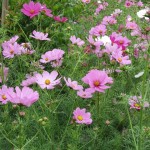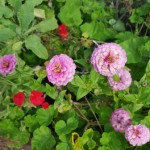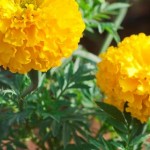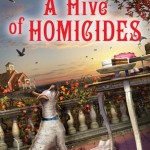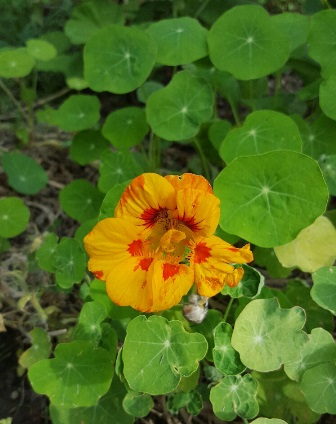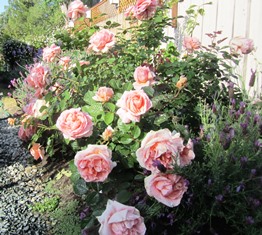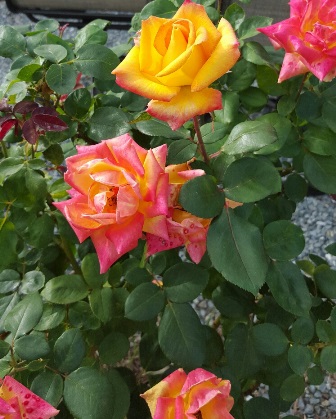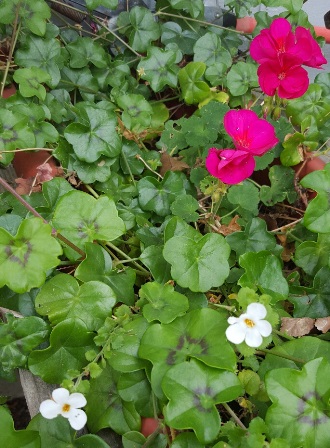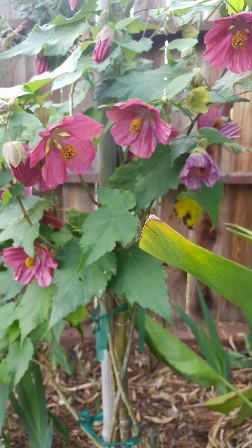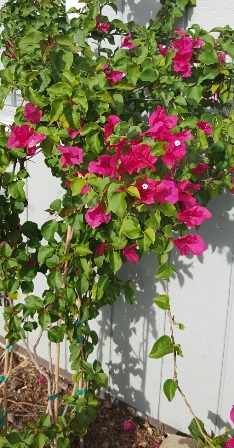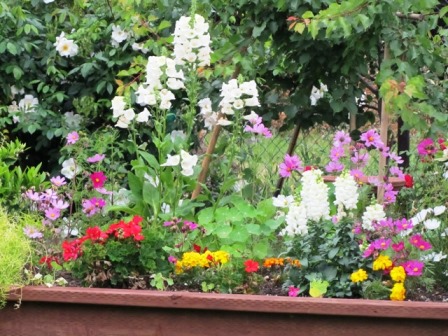Time to Harvest Seeds from Annuals
If you are like me, you hate to see anything wasted. Case in point, seeds from a summer flower garden.
Walking around my farmette this time of year, I see many seed pods on flowers that I can take off, dry, and store. Scores of my flowering plants are perennials that come back again next year, but may others are annuals, grown throughout one season.
Just because they are annuals doesn’t mean that I have to buy new seed in order to grow them next year. No. I will gather their seeds (found in flower heads or seedpods or the calyx, located at the base of the flower on the plant). I can then pull the annual and toss the plant biomass into compost pile. The seeds I’ve collected will be further dried and stored in paper envelopes labeled with the date collected and the plant’s name and color.
In the plant store you’ll find hybridized plants along with those NOT MARKED as F1 hybrids. Seeds you collect from the non-hybridized plants will come back true to their parents the next year. Non-hybrids include heirloom, open-pollinated plants that some gardeners (myself included) prefer for their gardens.
This year, I sowed zinnia seeds that I had collected two years ago. Tossing them into a bare area of the garden, I forgot about them. When they not only grew but bloomed profusely, I felt immensely pleased with myself for taking the time to collect that seed.
Zinnias are annuals. Their tiny seeds are located in the flower heads. They can be removed once the plant has finished blooming and dried.
Nasturtiums are annuals that drop their seeds (the size of a pinto bean) and will often re-seed where they’ve grown before. I like to collect these into paper envelopes and label according to color and whether they grow as a vine or bush. They actually prefer poor soil and bloom well in full sun (less so, in shade). Nasturtiums are also edible flowers–just wash, dry, and toss into a salad or use as a garnish.
Petunias are lovely annuals that carry their seed in the calyx (just under the flower). The calyx swells with seeds so you’ll want to remove the dead flowers along with the part of the stem that includes the calyx (top of stem) . Pull off the petals. When the calyx dries and splits open, you’ll see the seeds. Save these for planting.
Marigolds add splashes of bright yellow color to your garden. Remove the dead flowers and save part of the thickened stem beneath the flower head (the calyx). Split open the calyx at the top of the stem to find the long, slender seeds. Dry and save these for your next year’s flower garden.
There are lots of other annuals that you can grow in a flower garden if you take the time to harvest and dry their seeds. Consult a gardening guide or plant grower’s catalog to learn more about the annuals you might want to grow. Then give seed harvesting a try so that you’ll get all your favorite blooms in a future garden.
____________________________________________________
If you enjoy reading about gardening and other farming topics, check out my newest novel, A HIVE OF HOMICIDES. It contains not only an entertaining mystery but also tips for growing plants and trees, keeping chickens and bees, and making delicious farm-wholesome foods.
Click here to see more: http://tinyurl.com/ya5vhhpm
Seasonal Blooms for Floral Arrangements
Autumn in Northern California is one of my favorite times of the year. By November, many of the summer blooms in our flower beds have faded. Seeds have been collected for next year’s blooms. Now’s the time to put in bulbs and tubers for spring, but that doesn’t mean we have no blooms for a Thanksgiving floral arrangement.
The clocks have been turned back and the rainy season has arrived, but don’t tell that to the roses.
Red-gold roses, pyracantha berries, rustic seed pods, orange- and rust-colored zinnias, asters, willowleaf cotoneaster, and dahlias are some of the garden plants that combine beautifully in a fall floral arrangement. To the harvest table, I also like to add some seasonal fruits like pomegranates and persimmons.
Thanks to the recent rain, the bougainvillea blazes in shades of fuchsia, orange, red, and purple. Zinnia’s near the farmette’s bee house are still holding color and hanging on until cold weather arrives.
And while pyracantha (fire thorn) berries add splashes of bright orange to a dark corner of the garden where bamboo towers to ten feet, the Chinese lantern plant holds aloft dozens of small pink blooms like little lanterns.
With Thanksgiving three weeks away, I’m feeling confident that our table arrangement will include some of the season’s festive berries, seed pods, and blooming flowers collected from around the farmette.
In the meantime, I’ll notice the splashes of color to be discovered here and there and consider how to use them in a holiday bouquet.
* * *
NEWLY RELEASED–The Murder of a Queen Bee (Kensington Publishing, NY–Sept. 2016).
Discover delicious farm-to-table recipes, farming tips, and wisdom as well as sort out a charming whodunnit. Also, enjoy gardening tips and farm sayings. Dig for clues while learning about bees and chickens. To learn more, click on the link under the picture.
See, http://tinyurl.com/h4kou4g
See, http://tinyurl.com/hxy3s8q
This debut novel launched the Henny Penny Farmette series of mysteries and sold out its first press run. It’s now available in mass market paperback and other formats.
How to Attract Local Pollinators
Today, I spotted a gorgeous bee, big and black with reddish-brown wings, dipping its proboscis into the lavender wisteria and other blooms in my garden. I was stung by a bee yesterday, but that doesn’t stop me from smiling with delight observing this little pollinator at work in my garden.
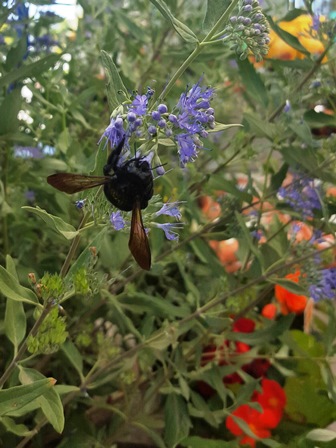
This longhorn bee, twice the size of a honeybee, dips its proboscis (meaning, tongue, nozzle, or snoot) into a bloom.
I admit I’m a fan of pollinators and enjoy watching them work amid the sunflowers, zinnias, cosmos, wisteria, and other blooms in the bee and butterfly garden I planted earlier this year.
The flowers attract hummingbirds, butterflies, bumblebees, and other types of bees, including my own Italian honeybees, the stock of bees most favored in this country (Apis mellifera ligustica). See, http://beesource.com/resources/usda/the-different-types-of-honey-bees/
Honeybees pollinate 90 percent of North America’s commercially produced crops, including almonds. That’s why many Northern California almond growers rent honeybees for use in their orchards during springtime bloom.
The National Academy of Sciences has noted that pollinators are needed to reproduce 75 percent of the Earth’s flowering plants. But there’s been a drop in natural pollinators, in part due to habitat loss and pesticide use.
Populations of the yellow, black, and brown Western bumblebee, once common from southern British Columbia to central California, have now all but disappeared. To attract bumblebees, plant giant hyssop, milk weed, and nettle-leaf horse mint. See, http://www.wildflower.org/collections/collection.php?collection=xerces_bumble
Here’s what else we gardeners and farmers can do to attract local pollinators.
1. Avoid using pesticides.
2. Plant bee, bird, and butterfly friendly native plants.
3. Choose plants that flower in varying diverse colors and shapes to attract a wide variety of pollinators.
* * *
If you enjoy reading about farmette topics (including gardening, beekeeping, and delicious recipes), check out my cozy mysteries A BEELINE TO MURDER and also THE MURDER OF A QUEEN BEE in the Henny Penny Farmette series (from Kensington Publishing).
These novels are available through online retailers such as Amazon, Barnes & Noble, Kobo Books, and Walmart as well as from traditional bookstores everywhere.
See, http://tinyurl.com/hxy3s8q
Now available in mass market paperback, this debut novel launched the Henny Penny Farmette series of mysteries and sold out its first press run.
See, http://tinyurl.com/h4kou4g
The second cozy mystery in the Henny Penny Farmette series, available Sept. 27, 2016
 Facebook
Facebook Goodreads
Goodreads LinkedIn
LinkedIn Meera Lester
Meera Lester Twitter
Twitter




